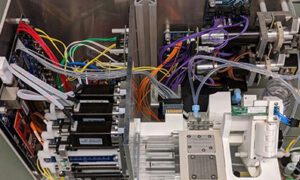Web design plays a pivotal role in shaping how businesses engage with their audiences. The latest innovations are not just enhancing aesthetics; they are fundamentally transforming user experiences and streamlining workflows. Understanding these changes is crucial for designers, developers, and anyone looking to build a strong online presence. Let’s explore some of the most impactful tech trends that are currently reshaping web design.
The Rise of Artificial Intelligence
AI technologies are revolutionizing web design by automating tasks that previously required extensive human input. Designers can now leverage AI algorithms to analyze user behavior and preferences, enabling them to create more personalized experiences. Tools powered by machine learning can generate design options based on current trends or user feedback, significantly reducing the design cycle time. Furthermore, AI can aid in accessibility by ensuring websites meet standards set for users with disabilities, allowing for a more inclusive web environment.
Responsive and Mobile-First Design
With the majority of web traffic coming from mobile devices, responsive design has become a non-negotiable aspect of modern web development. A glance at a TopAgency list of companies embracing these innovations shows a clear trend towards immersive experiences in their offerings. Designing with a mobile-first approach ensures that websites adapt to various screen sizes, providing an optimal user experience across devices. This shift is supported by advancements in CSS and JavaScript frameworks that make it easier to implement adaptive designs. As a direct result, businesses that prioritize responsive design often see improved engagement rates and lower bounce rates compared to those that do not.
Immersive Experiences through Augmented and Virtual Reality
Augmented reality (AR) and virtual reality (VR) are pushing the boundaries of what web design can achieve. These technologies create immersive environments that allow users to interact with products or services in a virtual setting. In the fashion industry, AR can let customers try on clothes virtually before purchasing. Similarly, VR can provide virtual tours for real estate or travel websites. As these technologies become more integrated into web design, companies will find opportunities to stand out in saturated markets.
Dynamic Content Delivery with API Integrations
APIs, or Application Programming Interfaces, are becoming increasingly vital for web design. They enable the integration of various services and data sources, facilitating dynamic content delivery. Websites can pull in real-time data such as weather forecasts, social media updates, or even news articles, keeping content fresh and engaging for users. This level of dynamism not only enhances the user experience but also keeps web applications scalable and adaptable.
User-Centric Design Powered by Data Analysis
Designers are utilizing analytics tools to gain insights into user behavior, preferences, and pain points. By analyzing this data, designers can make informed decisions about layout, content, and features that are most appealing to their audience. The emphasis on user-centric design helps companies create websites that not only attract visitors but also convert them into loyal customers. Utilizing feedback loops, designing for iterative testing, and maintaining flexibility in design approaches are essential strategies for continuous improvement.
Future-Proofing with Low-Code and No-Code Solutions
The emergence of low-code and no-code platforms is democratizing web design, allowing those without extensive technical skills to create functional websites. These solutions offer user-friendly interfaces that enable individuals to customize templates and build applications with minimal coding knowledge. As a result, more people can contribute to the web design process, fostering creativity and experimentation. Businesses looking to stay competitive must consider how these tools can complement their development processes while enhancing agility.

Embracing these advancements is essential for designers and businesses striving to create engaging, user-friendly experiences. By leveraging AI, responsive design, immersive technology, dynamic content delivery, data analytics, and user-friendly platforms, companies can elevate their online presence and stay ahead of the competition. In this digital era, adaptability and innovation are key to thriving in the web design landscape.



































